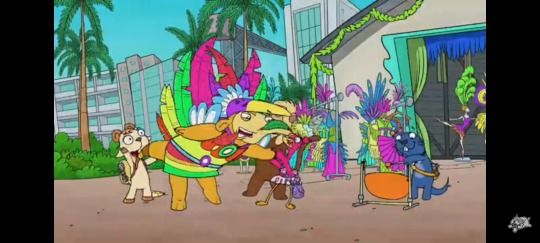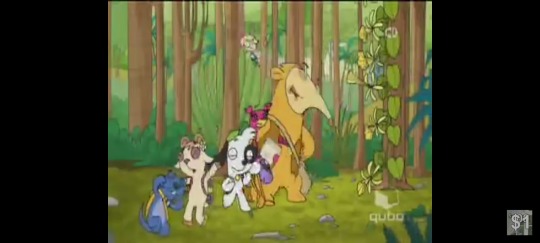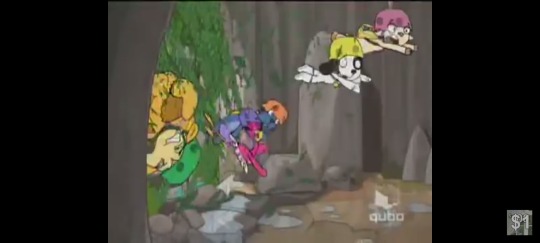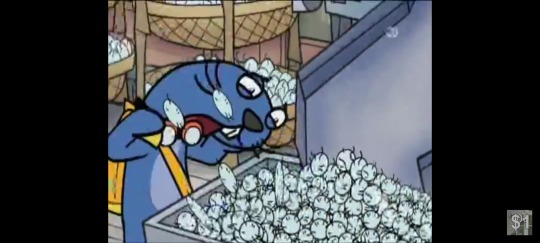#Mundi discovery kids
Explore tagged Tumblr posts
Text


Dibujitos de mis héroes de la infancia 💙💚✨
Cada uno echo en una aplicación diferente.
#dk#sketchbook#my fan art#my art <3#discovery kids#discovery kids Doki#Doki discovery kids#Mundi discovery kids#discovery kids Mundi#dk Mundi#Mundi dk#Doki dk#dk Doki#Doki and Mundi discovery kids#discovery kids Doki and Mundi#Doki and Mundi#Mundi and Doki#bets friend
17 notes
·
View notes
Text
#doki#doki discovery kids#discovery kids#discovery kids doki#natal#christmas#navidad#mundi#mundi doki#nostalgia
3 notes
·
View notes
Text




Doki and friends in loonatics unleashed
My deviantart here
https://www.deviantart.com/l0nt4n1c4ever99/gallery
#Doki#Doki the serie#discovery kids#Doki discovery kids#Fico#Oto#Mundi#Gabi#Anabella#loonatics unleashed#Loonatics#Lu#Crossover
11 notes
·
View notes
Note
Además de Doki quién mas sabe la verdad sobre Peppa? Algún otro personaje de Discovery kids?

Además de Austin ahorita, Mundi era la única que estaba ahí para ver desarrollarse todo
12 notes
·
View notes
Text

Strange things are happening on Royal Street...But the Twisted Sisters won't leave the city they love unprotected.Royal Street Romp by Brenda Trim is available for preorder now!
Universal: https://geni.us/RoyalStreetRomp
Luckily for New Orleans, the Six Twisted Sisters have gone from magical newbies to fearless paranormal investigators who will stop at nothing to protect their home from destruction... When strange things start happening on Royal Street, the sisters spring into action to keep the city's magical realm hidden from the mundies. Searching for answers raises many more questions while simultaneously revealing a sinister force that causes supernaturals to act out in dangerous ways. Lives are now on the line. As the clock ticks down to discovery or something even more disastrous, the sisters follow a trail of clues to a shocking revelation: an evil spirit has been unleashed upon the city with a murderous agenda spelling doom for all. The stakes are as high as they've ever been, but the sisters will rise to the challenge. In the face of an impossible choice, will they save their own loved ones, or protect the supernatural world from exposure? Neither, if the vile force running rampant among the supernatural community has anything to say about it.
#teaser #teasershare #teasertuesday #preorder #bookpreorder #comingsoon #pwf #paranormalwomensfiction #twistedsistersmidlifemaelstrom #royalstreetromp #magicalmidlfe #midlifefiction #midlifeheroine #supernaturalfiction #paranormalfiction #womensfiction #sisterfiction #sisterhoodfiction #reading #books #bookbuzz #bookclub #booknews #bookbuzz #readers #booklovers
About Brenda:
A USA Today bestselling author, Brenda loves everything paranormal. She has co-authored over twenty-five books in the best-selling Dark Warrior Alliance series, as well as the Hollow Rock Shifters series. She also has best-selling solo titles readers are raving about. Brenda created worlds that feature dangerously handsome heroes and feisty heroines. With the help of popcorn and candy, she takes dragons, fairies, witches, vampires, and so much more and brings them to life. She lives in Texas with her husband and three kids who fuel not only her heart but her life. If she's not writing, she's reading, traveling, or knee-deep in projects with her husband and five sisters. She encourages readers to Dream Big. If your dreams don't terrify and electrify you then they aren't big enough!
Follow Brenda! Amazon: https://amzn.to/3nm4TTN BookBub: https://bit.ly/3lkCvQp Facebook: https://bit.ly/2SvQHte Goodreads: https://bit.ly/3lcKHCb Instagram: https://bit.ly/33yg5oM Twitter: https://bit.ly/2StFQQH Website: https://www.brendatrim.com
#teaser#teasershare#teasertuesday#preorder#bookpreorder#comingsoon#pwf#paranormalwomensfiction#twistedsistersmidlifemaelstrom#royalstreetromp#magicalmidlfe#midlifefiction#midlifeheroine#supernaturalfiction#paranormalfiction#womensfiction#sisterfiction#sisterhoodfiction#reading#books#bookbuzz#bookclub#booknews#readers#booklovers#readersofinstagram#bookloversofinstagram#booksofinstagram#bookstagram
0 notes
Text








Beeg doodle dump
#spinel#animal crossing villagers#doki#Mundi#discovery kids#South Park#Steven universe#south park kyle#South Park Kenny#South Park stan#animal crossing punchy#puertorrican frog :]
17 notes
·
View notes
Text
The Mercs & Fatherhood
Offense | Defense | Support
Medic
Medic is extremely excited to have a child. He's read every child development book he could get his hands on...and promptly threw them away in favor of doing things his own way. He's the kind of parent who keeps a record of every first; videos of their first steps, lock of hair from their first hair cut, first lost tooth, etc. and cherishes it to no end. He'll take any opportunity to whip out his wallet and show off the pictures of his child(ren), boasting about them as if they were a another successful experiment or procedure. Medic talks shop to them as if they were a merc or a colleague in his field. He does this so much so infact, that his kid(s) does infact start to pick up some of the terminology and is able to follow along with their dad's stories pretty well. If it wasn't for the fact that his kid(s) was almost immediately escorted out of his lab upon discovery, every day would be "Take your Kid to Work Day" for Medic.
Sniper
Mundy is a bit of a hands off parent. That isn’t to say he’s unloving, cold or lazy, but he is a firm believer of learning through experience. He’ll take his kid(s) on hunting trips and hikes and will let them roam a bit, never letting them out of his site and always prepared to jump into action should he need to, but he wants to give his them the freedom to explore. He want his kid(s) to figure things out on their own. To Sniper, scraped knees and grass stains are a necessary part of childhood. He isn't the type to harp on mistakes his child(ren) makes, but he'll always talk through it with them and show them ways to correct their behavior and be better.
He keeps his kid(s) FAR away from the mercs since the last thing he'd want to do is mix his personal life with his work life. They might not even know he has a kid with how tight lipped he is about them. Really Mundy just wants his life with his kid(s) to be a peaceful one without having to totally shelter them.
Spy
Given the opportunity to actually be around to raise a child, he'd absolutely do everything in his power to just make them a mini Spy. This child will go to the best private school, will learn as many languages as possible at a young age, get enrolled in dance classes and any other art related extra curricular; they will be as spoiled and bougie as can be. Spy will be ensure that his kid(s) is as cultured and refined as he is. He wouldn't necessarily be a stern father but he'd have high expectations of his kid(s). He'd be the king of gassing them to a fault, often telling them that they're "too good this place" and better than the rest. His kid(s) will definitely have a bit of a stuck up demeanor, but Spy would see it as them simply being "refined". He'd be the type to use those "my child is an honor student at ____" bumper stickers.
#tf2#team fortress 2#tf2 spy#tf2 medic#tf2 sniper#spy tf2#medic tf2#sniper tf2#mick mundy#gb.writing#support class
105 notes
·
View notes
Text
I realize this is sudden but Im watching a Discovery Kids iceberg video and just found out about what happened to doki and mundi
I HATE Peppa Pig. she knows what she did.
4 notes
·
View notes
Text
TEDx Salt Lake City - Time Well Spent
I’ve just returned from TEDx Salt Lake City 2019 and I am super excited about the experience. If you have ever watched any of the hundreds of TED talks online, you know what I’m talking about.
TED conferences bring together a myriad of different subjects and speakers are given 20 minutes to give the audience an incredible amount of info about whatever subject they are an expert on.
Here is the description straight from the TED website:
TED is a nonpartisan nonprofit devoted to spreading ideas, usually in the form of short, powerful talks. TED began in 1984 as a conference where Technology, Entertainment and Design converged, and today covers almost all topics — from science to business to global issues — in more than 110 languages. Meanwhile, independently run TEDx events help share ideas in communities around the world.
I spent the day learning incredible things from incredible people and then afterwards I was lucky enough to get a chance to spend some time talking with some of the speakers and learning even more. Also, this isn’t just about learning, it is an *event*! Held at Kingsbury Hall on the University of Utah campus, the breaks throughout the day allowed attendees to go outside and enjoy food trucks, dancers, scientific exhibits, and more. The only way to really appreciate what these events are all about is to attend one in person.
Attending a TED Conference has been on my bucket list for a few years now. I had originally thought that the meetings were something reserved for special individuals, but it turns out that all you need is a desire to learn and to purchase a ticket. You can either visit the TEDx Salt Lake website or you can go to the main TED website for ALL the details.
Here are people and bios of those who brought me so much education on Saturday:
Cathy Callow-Heusser Instructional Designer and Educational Researcher Cathy Callow-Heusser started her career as a software engineer. She coded expert systems and multimedia applications while earning degrees in Instructional Design and Educational Research and Evaluation. She has worn many hats, but her happy place is teaching math. Cathy prefers to teach students who have traditionally struggled in math because she loves watching attitude changes as students become successful. The best decade of her career involved evaluating the Bureau of Indian Education’s (BIE) Reading First program and subsequent initiatives in literacy and math, as well as providing technical assistance to help teachers improve reading and math instruction. During this time, she and her teams traveled to 86 BIE schools throughout the US, which cemented her passion for honoring cultures and languages. Representation MATTERS! Cathy is the proud mom of 2 biological, 2 adopted, and 3 bonus children. She and her husband Val have 10 grandchildren.
Connor Behr Molecular Biology Student Connor Behr is currently a student at BYU PathwayConnect in pursuit of a degree in molecular biology, which he has loved and studied since he was 12 years old. He is skilled in the field and has experience shadowing at ARUP Laboratories and a summer internship at the Huntsman Cancer Institute. Connor received the Emperor Science Award in 2017 for his research in cancer development and treatment, and he conducted related gene and protein expression projects with Physarum polycephalum, an organism he has been studying for more than 9 years. He is currently heading a campaign called the PhyR Project for the development of an alternative insulin production technique.
Cynthia Bee Conservational Landscape Architect Cynthia works to translate the technical nature of landscaping into public friendly messaging as the Outreach Coordinator for the Jordan Valley Water Conservancy District's Conservation Garden Park. Whether it's teaching landscape classes to homeowners or creating digital and social media marketing content, she's learned how homeowners think about landscaping-and how to influence them. Cynthia earned her Bachelor's Degree in Landscape Architecture from Utah State University and has spent more than 20 years working in different sectors of the green industry.
David Kozlowski Marriage & Family Therapist David Kozlowski obtained a Masters degree in Counseling Psychology from National University in San Diego. Since 1999, David has worked as a counselor, behavioral specialist, mental health worker, and therapist in group homes, crisis treatment centers, psychiatric hospitals, drug addiction facilities, and schools for severely emotionally disturbed kids and teens. David has his own private practice, is the Host of the Light The Fight podcast, and is the Executive Director of the Non Profit Quit Trip’n.
Denise Druce Yoga Instructor For nearly four decades, Denise Druce has been inspiring people to live healthier, happier lives. She calls herself an Elevator…when you’re around her, you’re going up! Denise has taught a wide variety of fitness classes over the years, from step to indoor cycling to her current and lasting love, yoga. She teaches her students to stand at the “Soft Edge of the Hard Place” in fitness and in life. Her non-profit Yoga Forward is "taking yoga where it isn’t"…prisons, shelters, schools, and shopping malls. She has a Masters Degree in Public Health, is a Yoga Alliance E-RYT500, and is a breast cancer Thriver. She spends most weekends on the road, making the world a better place by getting more people trained to teach yoga everywhere. Denise and her husband, Michael live in Salt Lake City with their three boys.
Dr. Joey Wilson Engineer and Entrepreneur Dr. Joey Wilson is an acclaimed engineer and entrepreneur, focused on the field of sensing people using radio waves. Dr. Wilson’s breakthrough doctoral work on detecting and locating movement using wireless networks at the University of Utah has earned worldwide attention. Dr. Wilson is now the founder and CEO of XANDEM, a company focused on high-tech radio frequency sensors for applications like energy efficiency, elder care, healthcare and security. XANDEM was the first to research, design, and ship a product that utilizes everyday wireless networks to accurately detect and locate moving people within buildings. Joey and his team are now helping other businesses turn existing wireless devices into powerful people-sensing systems. In his free time, you can find Joey throwing a disc with his wife and two sons on the grassy fields near their home in Salt Lake City, finger picking his guitar, backcountry skiing through the trees, or trail running in the beautiful mountains of Utah.
Dr. Ruby Chou Executive Director, Mundi Project Dr. Ruby Chou is an arts executive, classical pianist, and educator. Ruby advocates for open access to pianos, music education, and innovative performances as the executive director of Mundi Project, a Utah-based nonprofit community music organization. Mundi Project is launching Utah’s first intergenerational music program at Neighborhood House in October. As an educator, she mentors 21st-century musicians as adjunct professor of piano and music entrepreneurship at Weber State University and specializes in teaching youth and adults in various learning environments. Ruby performs locally and nationally with professional, amateur, and young musicians. Ruby also serves on the board of directors for Utah Nonprofits Association. Dr. Chou earned a doctoral degree in Music and Human Learning from The University of Texas at Austin. She graduated from Manhattan School of Music in NYC with a master’s degree in piano performance and a Bachelor of Music degree from The University of Utah.
Dr. Taylor Sparks Associate Professor of Materials Science and Engineering Dr. Taylor Sparks is an Associate Professor of Materials Science and Engineering at the University of Utah. He is originally from Utah and an alumni of the department he now teaches in. He did his MS in Materials at UCSB and his PhD in Applied Physics at Harvard University and then did a postdoc in the Materials Research Laboratory at UCSB. He is currently the Director of the Materials Characterization Lab at the University of Utah and teaches classes on ceramics, materials science, characterization, and technology commercialization. His current research centers on the discovery, synthesis, characterization, and properties of new materials for energy applications. He is a pioneer in the emerging field of materials informatics whereby big data, data mining, and machine learning are leveraged to solve challenges in materials science. When he’s not in the lab you can find him running his podcast “Materialism” or canyoneering with his 3 kids in southern Utah.
Em Capito LCSW Em Capito is an unconventional psychotherapist obsessed with the widespread loss of resilience in the face of overwhelming comfort. While studying her own trauma from the inside out, Em embarked on a series of experiments that led to a prescription for intentional discomfort. Em blends these experiential interventions with meditation and yoga therapy to build the holistic mind-body resilience that carries us through our darkest moments. She completed a master’s degree in social work at the University of Utah in 2007 and a master’s degree in business administration at the University of Phoenix in 2011. Em is a Licensed Clinical Social Worker, a certified LifePower yoga teacher, and a Dharana Method meditation teacher with a private practice in Salt Lake City, Utah.
Foreign Figures Musicians Foreign Figures’ alternative take on pop music stems from the four very different humans that create it together: EJ, Steve, Seth and Jonny T. Formed in late 2014, the Utah band has achieved millions of streams online, received licensing deals from Fox, MTV and Fox Sports, and taken their charismatic live show to over half of the United States. The band’s sound and synergy comes from their desire to create something unique together that they couldn’t or wouldn’t create on their own. They view their creative differences and skills as something to celebrate, and collaboration as something special. The band name is a synonym for authenticity and imagination, which comes through lyrically in many of their songs, breaking down the culture of choosing sides. Everyone is a foreign figure to someone else in the world—if you’re unlike anyone else, then you’re a foreign figure.
Gerald Elias Musician, Author, Conductor, Composer Gerald Elias leads a dual life as an internationally acclaimed musician and award-winning author. A former violinist with the Boston Symphony and associate concertmaster of the Utah Symphony, Elias, performer, conductor, composer, and teacher has concertized on five continents. He has been music director of the Vivaldi by Candlelight chamber series in Salt Lake City since 2004. His Daniel Jacobus mystery series takes place in the dark corners of the music world where greed, ambition and lust lurk backstage. His debut novel, Devil’s Trill, was a Barnes & Noble Discover Great New Writers selection. Two others have been recorded as unique audio books in which Elias performs musical clues. Elias has also authored a children’s story, Maestro, the Potbellied Pig. His 2018 essay, “War & Peace. And Music,” won 1st prize from the Utah Division of Arts & Museums. Elias resides in Salt Lake City and West Stockbridge, Massachusetts.
Jaxon Willard Dancer, Choreographer Jaxon Willard dances at Center Stage Performing Arts Studio. He currently trains in numerous styles of dance, including Jazz, Contemporary, Hip-Hop, Ballet, Musical Theater and Ballroom. Jaxon has been dancing since before he could walk. He was a quick study and loved music and to move. He started choreographing early on as well. He made the Brigham Young University Youth Ballroom team when he was 12, but after much thought and heartache, he began his formal training for all styles of dance and dance company involvement. At his very first Nationals competition, the Dance Awards Vegas 2016, he placed in the Top 10 for the Best Dancer. The following year at the Dance Awards Nationals Vegas 2017, he was honored to be named the First-Runner Up for The Best Dancer, with a self-choreographed piece. Jaxon feels blessed to have the opportunity to have found something that brings him such happiness and allows him to express himself in a profound and positive way.
Jessica Baynes Founder, Healing in Motion Dance Jessica Baynes attended the University of Utah, where she received her BFA in Modern Dance. Jessica sustained a Traumatic Brain Injury during her freshman year and underwent almost two years of intensive rehabilitation to regain quality of motor function. During that time, she experienced social isolation, stigmatization, and loss of identity as a result of her injury. Since recovering, Jessica founded Healing in Motion Dance, an arts and medicine initiative that teaches rehabilitative ballet classes to participants with neurological conditions that impair neuromuscular function such as Multiple Sclerosis, Parkinson's Disease, and stroke. Her goals with the program are to physically strengthen and emotionally empower others with motor function inhibiting diagnoses, through ballet. Healing in Motion Dance serves as a platform on which collegiate dance and physical therapy students collaborate by designing adaptive ballet classes for patients in their local healthcare system.
Josh Taylor Creative Change Agent Josh Taylor is a filmmaker, designer, writer, art director, and creative strategist, but at his core, he is a Creative Change Agent and Business Storyteller. He helps companies in the midst of pivotal change/transformation moments, discover, craft and share their own stories through creative content, experiences, and workshops, in order to help their employees and customers build stronger emotional engagement and human connection to the business and its journey.
Karen Burns Assistant Director, Intermountain Therapy Animals After working in the corporate world for many years, Karen Burns found her true passion in a non-profit organization, Intermountain Therapy Animals (ITA). Karen is the Assistant Director of ITA and manages Reading Education Assistance Dogs (R.E.A.D.) Programs in 30 (and growing) schools and libraries in the state of Utah. She has partnered with three different therapy animals over the past two decades, and is also a licensed ITA Workshop Instructor and R.E.A.D. Instructor. Karen enjoys traveling around the country and internationally training others to use our literacy support program, R.E.A.D., in their communities. Karen remains passionate about sharing the gifts our four-footed friends can offer people during difficult times in their lives. They offer hope, healing, fun and a sense of normalcy in settings where that is rarely otherwise possible.
Kotryna Liepinyte Student Kotryna Liepinyte is a former undergraduate student from the University of Utah with a BA in English Literature and Communications. She was born in Kaunas, Lithuania and is passionate about honoring her foreign culture and engaging in conversation about immigration stereotypes. Kotryna's mission is to provide an open dialogue about the representation of immigrants in local and global news. Kotryna intends to pursue her education and passion by attending law school. She also enjoys traveling around the world and experiencing a variety of cultures.
LeBaron Family Singing Family The LeBaron family was brought to the limelight when a casual recording of their family karaoke night went viral. Dennise LeBaron had requested that her children make her a video of them singing “One Day More.” The LeBaron children and their spouses all love to sing, so they happily complied. The video was posted to Facebook, and by the end of the week, it had over 8 million views! When the children were very young, they showed themselves to be extremely musical and eager to perform. Mom and Dad, musicians themselves, were pleased to instruct them in the hope that sharing music would create strong bonds between their children. After the oldest daughter, Holli passed away in 2002, the remaining siblings have prolonged her legacy through music. The family attributes its closeness to the memory of Holli and her deep appreciation for music and their family’s religious faith. The LeBarons hope to not only share their music with the world, but make everyone who hears it feel like family.
Rob Landes Violinist Take a classically-trained violinist who began studying at the age of 3, add two music performance degrees, include a loop pedal and a dash of humor, and you have Rob Landes. Rob Landes has become a sensation on both YouTube and Bilibili (China’s most popular short-video platform) for his combination of video game music, pop music, comedy, and costumes. With over 1.6 Million subscribers worldwide and 160 million views online, Rob has delighted diverse audiences with hundreds of musical covers. As to his live performances, Rob Landes has opened for T-Pain, Rachel Platten, and Jason DeRulo, while also having performed at New York Fashion Week, Carnegie Hall, the Sundance Film Festival, throughout Europe, Northern Africa, Southeast Asia, and now TEDxSaltLakeCity!
0 notes
Text
Introduction
The quest to understand how great bacon is made takes me around the world and through epic adventures. I tell the story by changing the setting from the 2000’s to late 1800’s when much of the technology behind bacon curing was unraveled. I weave into the mix beautiful stories of Cape Town and use mostly my family as the other characters besides me and Oscar and Uncle Jeppe from Denmark, a good friend and someone to whom I owe much gratitude! A man who knows bacon! Most other characters have a real basis in history and I describe actual events and personal experiences set in a different historical context.
The cast I use to mold the story into is letters I wrote home during my travels.
The saltpeter letter, Part 1.
May 1891
Dear Children,
The days grow ever more light and joyful as summer approaches. My mind drifts back to Cape Town as I see the Danes going about their business of being Danish! I remember the last church service at the Groote Kerk in Cape Town before I left on my grand quest.
It is in the same church where my mom and dad were married and where I was christened as a baby. As staunch Calvinists, much of life revolved around church and the Groote Kerk was my second home.
1910 photograph – sent to Schalk LE ROUX from Marthinus van Bart Photographer: Unknown
It was the first Christian place of worship in South Africa. The oldest church structure on this piece of land dates back to 1678, 26 years after the Dutch landed to set up their refreshment station. The current building was built by the German architect Herman Schuette in 1841. Much of the old church, including the steeple, was retained in Schuette’s new design. It is situated right next to parliament. The last Sunday before I left for Europe, my kleinneef preached.
He is a gentle man with a large pastorly heart. His theology is progressive and his faith sincere. My mom and dad are close to Oom Giel and his Brother, Oom Sybrand. They are my mom’s cousins.
That particular morning his text was Ephesians 5. I remember hearing the horse carts rattling by in the street outside church down Adderly street. As always, there was energy in the air as people arrived. Oom Jacobus and the Graaff kids who lived with him sat in their own allocated seating. He hung his hat on the rack provided for every congregant.
Oom Giel’s thesis was “Live as people of the light.” Here, at the Groote Kerk, the people who started the Cape Colony worshiped and receives their spiritual direction. Oom Giel stressed that we receive the light, but he was humble about what that means. As a theologian, he was ahead of his time. “A day will come when we realise that the church does not have all the answers. One day the church will no longer be able to scare non-believers into faith by the threat of hell. The light we received is that we are in Gods hands. Its a way of life.”
Deep-seated Calvinism shaped the colony. From the straight roads and square corners on neat houses to straight orchards. They believed God was in the first place viewing life as a geometer and this shaped everything they did. The Groote Kerk is the spiritual spring of the Colony.
It was not only an obsession with geometry that bewitched those who drank from the well and a misplaced superiority complex over all of Gods world, but a good was also distilled from these waters. A friend from further up in Africa pointed it out to me one day when he visited Cape Town and I took him around to see the beautiful city. A mindset prevails among its inhabitants that says, we are here and we can thrive! We can get many things from Europe, but by golly, we can do it ourselves! What we can do is any time as good as the best we can get from Europe! With discipline and diligence, inherent to the Christian gospel, they approached every task set before them! In straight lines!
They minded their own business and desired a quiet life. They wanted to live in the light of their gospel. That is how Oom Jacobus approaches life. How he cut his meat and wrap it for customers; cure the bacon; grew his spices in his enormous garden at his home in Woodstock.
As Oom Giel lead us in reciting the Apostolic Creed, I wondered, how many times through the years was it recited in this Church! The settlers, for all their faults – many of them were bound by this confession and tried to live true to its articles.
Om Giel broke the bread. It is communion with the body of Christ. And so is the wine, union with the blood of Christ. Our rituals and confessions link us to countless generations. Past and present and from these deeply held beliefs we became. I am in Denmark to learn the art of meat curing, like Uncle Jacobus. The last Sunday in Cape Town, I listened to Oom Giel with Uncle Jacobus and David de Villiers Graaff in attendance. What a special day!
Now I am learning another gospel in Denmark. The art of curing bacon and the salt we use is saltpeter. Uncle Jeppe reminded me of Oom Giel when he leaned forward in his chair pressing down on his desk. Passion for the subject. Authoritative. “I am getting ahead of myself,” Uncle Jeppe said. “The story of saltpeter goes back much further than Dr. Polenski” He pulled the one drawer open and produced a big ledger in which he keeps notes written in his neat cursive handwriting. Jeppe taught me to keep such a book and at night to write down what I learned or observations from each day. From these notes, I write my letters.
“Saltpeter is one of the magical salts of antiquity. For most of human history, we did not know what saltpeter was,” Jeppe preached on. “Saltpeter was used in ancient Asia and in Europe to cool beverages and to ice foods. There are reports dating back to the 1500’s about it. Without any doubt, it has been practiced and known for millennia before it was reported on in writing. (Reasbeck, M: 4)
From antiquity the ancient cured their meat with it and enjoyed its reddening effect, it’s preserving power and the amazing taste that it gives. There are records of the Romans curing meat from 160 BCE. Earliest references to it go back to people in Mesopotamia from the Bronze Age who used it in the same way as the Romans. The characteristic flavor it imparts to meat was reported on in 1835 (Drs. Keeton, et al; 2009) but there can be little doubt that it was noticed since many thousands of years before the 1800’s.
The Chinese worked out how to use it in explosives. There is even a record of gunpowder being used in India as early as 1300 BCE, probably introduced by the Mongols. (Cressy, David, 2013: 12)
People started using it as a fertilizer when overuse of the land required us to replenish the nutrients in the soil.”
It was widely known traded in markets in China, India, the Middle East, North Africa, Europe, and England. It was its use by the military in gunpowder and it’s pharmaceutical use that made it generally available in Europe from the 1700s. This meant its usage as curing agent with salt increased and by 1750 its use was universal in curing mixes in Europe and England. Most recipe books from that time prescribed it as curing agent. (Drs Keeton, et al, 2009)
Despite its wide use by 1750, people still could not work out if saltpeter occurred naturally or was it something that had to be made by humans. When they managed to get hold of it, they wondered how to take the impurities out of the salt which gave inconsistent curing results. People were baffled by its power.
Jeppe said that “Some speculated that it contained the Spiritus Mundi, the ‘nitrous universal spirit’ that could unlock the nature of the universe!”
He quoted Peter Whitehorney, the Elizabethan theorist who wrote in 1500’s. He said about saltpeter, “I cannot tell how to be resolved, to say what thing properly it is except it seemeth it hath the sovereignty and quality of every element”.
Paracelsus, the founder of toxicology who lived in the late 1400’s and early 1500’s said that “saltpeter is a mythical as well as chemical substance with occult as well as material connections.” The people of his day saw “a vital generative principle in saltpeter, ‘a notable mystery the which, albeit it be taken from the earth, yet it may lift up our eyes to heaven’” (Cressy, David, 2013: 12)
Jeppe got up from behind his desk and lay the journal open in the palm of his one hand. He was pacing up and down in front of his desk and continued reading. From the 1400’s to the late 1800’s we have records of almost every scientist probing and testing it to determine its properties. No doubt, ancient scientists and stone age chemists did the same for many thousands of years before this time and in a way, it is the fascination with enigmatic salts like this that precipitated the science of chemistry.
“Saltpeter encompassed the “miraculum mundi”, the “material universalis” through which ‘our very lives and spirits were preserved. Its threefold nature evoked ‘that incomprehensible mystery of … the divine trinity,’ quoting Thomas Timme who wrote in 1605, in his translation of the Paracelsian Joseph Duchesne. “Francis Bacon, Lord Chancellor and Privy Councillor under James I, described saltpeter as the energizing “spirit of the earth.”” (Cressy, David, 2013: 14)
“Robert Boyle who did experiments trying to understand saltpeter found it, ‘the most catholic of salts, a most puzzling concrete, vegetable, animal, and even mineral, both acid and alkaline, and partly fixed and partly volatile. The knowledge of it may be very conductive to the discovery of several other bodies, and to the improvement of diverse parts of natural philosophy” (Cressy, David, 2013: 14)
Tristan, Lauren, I was completely dumbstruck! A salt that I have been using almost every day since I landed in Denmark! I was overcome by a feeling of deep respect for this chemical compound that we readily use. I stepped onto a stage where a Shakespearean drama has been acted out and I became part of a grand history. I would never again hold it in my hand and think of it in the same way!
I recall Oom Giel’s sermon.”Live as people of the light. Be true to your most basic quality.” For millennia, saltpeter mesmerized us long before its essential nature could be explained. Oom Giel’s message was the same. Mesmerize others with your essential Christian character. There should be no need for debate or discussion.
It is late in the Østergaard family home. Andreas, his dad and I were discussing Uncle Jeppe’s lessons from today after supper. They promised to take me to meet a Chemistry professor at the University of Copenhagen on Saturday who will tell me a lot more. I am insanely excited. The house is now quite with everybody asleep except me, wrapping the day up with my customary letter to you guys.
I love you more than life itself and can’t wait to share what I learn from the university next weekend with you and will write again on Sunday.
Love,
Dad
——————
——————-
(c) eben van tonder
“Bacon & the art of living” in bookform
Stay in touch
Like our Facebook page and see the next post. Like, share, comment, contribute!
Bacon and the art of living

Promote your Page too
References
Cressy, D. 2013. Saltpeter. Oxford University Press.
Cressy, D. Saltpetre, State Security, and Vexation in Early Modern England. The Ohio State University
Crookes, W. 1868/ 69.The Chemical News and Journal of Physical Science, Volume 3. W A Townsend & Adams.
Deacon, M; Rice, T; Summerhayes, C. 2001. Understanding the Oceans: A Century of Ocean Exploration, UCL Press.
Dunker, CF and Hankins OG. October 1951. A survey of farm curing methods. Circular 894. US Department of agriculture
Frey, James W. 2009. The Historian. The Indian Saltpeter Trade, the Military Revolution and the Rise of Britain as a Global Superpower. Blackwell Publishing.
Jones, Osman, 1933, Paper, Nitrite in cured meats, F.I.C., Analyst.
Drs. Keeton, J. T.; Osburn, W. N.; Hardin, M. D.; 2009. Nathan S. Bryan3 . A National Survey of Nitrite/ Nitrate concentration in cured meat products and non-meat foods available in retail. Nutrition and Food Science Department, Department of Animal Science, Texas A&M, University, College Station, TX 77843; Institute of Molecular Medicine, University of Texas, Houston Health Science Center, Houston, TX 77030.
Kocher, AnnMarie and Loscalzo, Joseph. 2011. Nitrite and Nitrate in Human Health and Disease. Springer Science and Business Media LLC.
Lady Avelyn Wexcombe of Great Bedwyn, Barony of Skraeling Althing (Melanie Reasbeck), Reviving the Use of Saltpetre for Refrigeration: a Period Technique.
Mauskopf, MSH. 1995. Lavoisier and the improvement of gunpowder production/Lavoisier et l’amélioration de la production de poudre. Revue d’histoire des sciences
Newman, L. F.. 1954. Folklore. Folklore Enterprises Ltd.
Pegg, BR and Shahidi, F. 2000. Nitrite curing of meat. Food and Nutrition Press, Inc.
Shenango Valley News (Greenville, Pensylvania), 26 January 1883
Smith, Edward. 1876. Foods. D. Appleton and Company, New York.
Schaus, R; M.D. 1956. GRIESS’ NITRITE TEST IN DIAGNOSIS OF URINARY INFECTION, Journal of the American Medical Association.
http://hansard.millbanksystems.com/commons/1938/mar/01/meat-prices
Photo credits:
The 1910 photo of the Groote Kerk, from https://www.artefacts.co.za/main/Buildings/bldg_images.php?bldgid=6457#25001
All other photos by Eben van Tonder
The saltpeter letter (Part 1) Introduction The quest to understand how great bacon is made takes me around the world and through epic adventures.
0 notes
Text
Reder Circus fará curta temporada no Shopping Nova Iguaçu

Respeitável Público!!! O REDER CIRCUS orgulhosamente apresenta todo o brilho e magia do espetáculo ABRACADABRA, estreando à frente da belíssima pedreira no Estacionamento do Shopping Nova Iguaçu. Em um luxuoso picadeiro com ambiente climatizado, o anfitrião Frederico Reder apresenta atrações internacionais como a Trupe de acrobatas da África, a família Romero, especialista em báscula e maca russa (que voltam ao Brasil depois de 20 anos na Europa), o paradista Juan do Peru, a família de Icarios Palma Diaz, do Equador, um globo da morte INÉDITO no Brasil com 5 motos, o fantástico mundo dos animais mágicos, os animágicos perigosamente carinhosos, e os surpreendentes números do maior mágico do Brasil Wander Rabelo.
Vai, vai, vai começar a brincadeira!
A música é tocada ao vivo por uma orquestra com dez músicos e cantores de sucesso como Thalita Pertuzatti (do The Voice e estrela do show Whitney Houston) e o grande Tenor Pablo Braunna. Trinta jovens bailarinos dançam canções clássicas e músicas de sucesso atuais que todo mundo sabe cantar. O circo traz o maior elenco do Brasil, com mais de 70 artistas no picadeiro num espetáculo imperdível.
Lugar de tradição e inovação! Com o patrocínio da NET e parcerias exclusivas com os canais infantis Nickelodeon, Discovery Kids e Cartoon Network, o ABRACADABRA traz ao vivo no palco a participação dos personagens originais da TV Ben10, Hora da Aventura, Doki e Mundi.
Tem goiabada? Tem, sim senhor! Tem alegria! Para toda a família? Tem sim, senhor!
Unindo a arte do circo, teatro musical, dança, e tecnologia audiovisual o show é uma homenagem às crianças de todas as gerações, - as que brincam em 2018 e as que moram nas memórias de todos os adultos. A estrutura da lona, com capacidade para 1200 lugares, transcende o picadeiro ao oferecer uma rica e diversificada praça de alimentação, com mais uma inovação do REDER CIRCUS, as charmosas mini Kombis, as KombiDinhas que vendem as melhores comidinhas do circo como pipoca, maçã do amor, algodão doce, churros e cachorro quente.
O espetáculo acontece de quinta a domingo.
Excepcionalmente na quarta, dia 08, o comediante Rafael Portugal se apresentará em um Stand Up Comedy no espaço.
Duração: 120 minutos
Classificação: Livre
Local: Estacionamento do Shopping Nova Iguaçu – Pedreira
Av. Abílio Augusto Távora, 1111 - Luz, Nova Iguaçu - RJ, 26265-090
Dias e Horários: De quinta a domingo.
Quinta e Sexta 20h30
Sábado e Domingo 14h30, 17h30 e 20h30
Ingressos a partir de R$ 25,00 *referente a meia entrada do setor bronze
Setor:
Diamante (Camarote Palco) – R$ 150,00
Brilhante (Camarote Superior) – R$ 140,00
Ouro (Cadeira Vip Central) – R$ 80,00
Prata (Cadeira Vip Lateral) – R$ 70,00
Bronze (Cadeira Lateral) – R$ 50,00
0 notes
Text
My own htf version doki






#doki#anabella#discovery kids#fico#discovery kids latinoamerica#gabi#doki_the_series#Oto#Mundi#Gabi goat#doki the series#doki discovery kids#Doki y sus amigos#Team doki#Equipo doki#htf#htf fanart#happy tree friends#Version#Au#Girl#Boy
2 notes
·
View notes
Link
TWO NEW, WELL-RESEARCHED popular histories — The Woman Who Smashed Codes by Jason Fagone and Code Girls by Liza Mundy — reveal the roles female American cryptanalysts played in cracking secret messages from 1917 through the end of World War II. Fagone’s book is a biography of Elizebeth Smith Friedman’s professional and personal life, while Mundy’s book reveals the work of thousands of female codebreakers and their influence on modern intelligence gathering. During Friedman’s heyday, cracking ciphers meant, for the most part, breaking pencil-and-paper encrypted messages. But by World War II, military and diplomatic encryption systems were using more sophisticated devices: encryption machines like the German Enigma, the Japanese Purple, and the American SIGABA. Codebreakers were compelled to reverse-engineer machines that would help crack those encrypted messages.
Fagone portrays Friedman as a premier American codebreaker, on a par with her husband, the better known (at least in the world of secret messages) William Friedman. Elizebeth, like William, broke encrypted messages during World War I and World War II. Between the wars, Elizebeth also cracked the messages of rum runners and bootleggers. Fagone depicts her not only as a cryptological genius but also as a loving wife, the intellectual equal of William, but emotionally sturdier.
Born in Indiana, Elizebeth Smith was one of nine children. Her mother decided on the unorthodox spelling of her name because, Fagone speculates, “her ninth child named Smith would want something to set her apart in the world.” Elizebeth was educated at Wooster College in Ohio, where she studied English literature; she graduated from Hillsdale College in Michigan in 1915. Back then, an educated American woman might teach at the high school level or below; as Fagone puts it, such a woman “taught, had kids, retired, died.” So, Elizebeth taught school. But soon after beginning her professional life as a teacher, Elizebeth went to work for Colonel George Fabyan, an eccentric millionaire, at his research facility, Riverbank Laboratories, in Geneva, Illinois.
Elizebeth met Fabyan in 1916, at the library. She was 23 and deceptively diminutive. Bearded and towering more than a foot above her, Fabyan — having been expelled from his chauffeur-driver limousine “like a clog from a pipe” — asked her, “Will you come to Riverbank and spend the night with me?” Elizebeth didn’t know what he meant by the invitation or what Riverbank was. She protested that she didn’t have anything with her, to which he replied, “That’s all right. We’ll furnish you anything you want.” This was Fabyan’s way of offering her a job.
To call Colonel Fabyan eccentric is an understatement. His military title was honorary, but he relished using it. At Riverbank, Fabyan funded and conducted research on genetically engineered seeds and acoustical levitation devices. He also funded a department that tried to prove, through secret messages in the text, that Sir Francis Bacon wrote Shakespeare’s plays. Fagone calls Riverbank “a bizarre institution now abandoned, a place that helped create the modern NSA but which the NSA knew little about.” Elizebeth agreed to work with Mrs. Elizabeth Wells Gallup, who led the department (and whom Mundy, in Code Girls, calls “a crank of the first order”). William Friedman, a geneticist, joined them, working on the so-called Bacon ciphers.
Elizebeth and William started courting at Riverbank and married in late May 1917. Neither Elizebeth nor William really believed that Bacon wrote Shakespeare’s plays — decades later, they co-wrote a book that proved he did not. Fabyan didn’t pay much, only $30 a month, and some months he paid nothing. Fabyan took credit for his workers’ discoveries and was generally a terror to work for. But a job was a job, and the Friedmans learned cryptanalysis — the art of analyzing and reading secret communications without knowledge of the system or the key. It could be arduous and debilitating mental work.
In addition to admiring Elizebeth, Fagone is clearly enamored with cryptology and enjoys describing ciphers. “There were two main animal kingdoms of cipher,” he writes, “‘transposition’ and ‘substitution.’ A transposition cipher was like Scrabble, a jumbling of the same letters into a new order. A substitution cipher was a swapping of letters.” Fagone includes samples of such encrypted messages and explains basic methods for “breaking” or “cracking” them. Even though this is not a “how-to” book, Fagone depicts, in a table in chapter four, simple frequency analysis, which amounts to evaluating language patterns: the frequency of individual letters like E and T, which are the most common in English, and letter combinations such as TH and THE. It’s a bit odd that Fagone refers to “smashing” codes in the book’s title and five times in the text, since the usual jargon is “cracking” or “breaking,” but that’s a minor quibble. The enthusiastic Fagone even includes, in the acknowledgments, a message to his wife and daughter encrypted with a Myszkowski transposition cipher, which crypto enthusiasts may want to try cracking. (No fair using a computer — the Friedmans didn’t have one.)
Back in the early 20th century, there was no Central Intelligence Agency, no National Security Agency. But there were the Friedmans. They became two of the few great codebreakers in the United States. Another couple, Parker Hitt and Genevieve Young Hitt, also broke ciphers. Parker Hitt wrote The Manual for the Solution of Military Ciphers, published in 1916. Army Colonel Joseph Mauborgne was another codebreaker of some repute, having executed the first break of the British army’s field cipher, Playfair. The United States did have a War Department, with a Military Intelligence Division (MID), led by Major Ralph van Deman, but it had only 17 officers and no codebreakers. Radio and other wireless transmissions had changed the way diplomats and soldiers communicated, and, unfortunately, the US government had no way to intercept ordinary unencrypted messages, let alone break the ciphers of foreign powers. So, in March 1917, Fabyan offered Riverbank’s services to break encrypted messages for the government.
About a month later, after Congress declared war, the War Department sent US Army Chief Signal Officer Joseph Mauborgne to evaluate Riverbank’s suitability for cryptanalysis operations. In preparing for Mauborgne’s arrival, Fabyan added clerks, stenographers, and translators to the newly created Riverbank Department of Ciphers, headed by the Friedmans. After Mauborgne made his report, Riverbank’s Department of Ciphers not only cracked messages for the government, but it also trained the military’s cryptanalysts. What’s more, William Friedman wrote several cryptanalysis manuals, known as the Riverbank Publications, some co-written by Elizebeth, though Fabyan tried to take the credit. In 1918, William enlisted in the army and traveled to France, where he worked as a cryptanalyst. Elizebeth wanted to join him, but the army told her that, as “a mere woman,” she “could not follow to pursue my ‘trade.’” She continued to break codes and train cryptographers, meanwhile enduring sexual harassment by Fabyan at Riverbank, unbeknownst to William.
After they finally left Riverbank, the two continued to crack secret messages, William for the army and Elizebeth for the coast guard, which was then part of the Treasury Department. Their annual salaries were considerably more than the pittance Fabyan had paid them: William received $4,500 and Elizebeth $2,200, although their jobs and qualifications were similar. Fagone notes that William was paid as a signal corps lieutenant and Elizebeth as a civilian, but he doesn’t remark much on the gender disparity, a topic Mundy treats in great detail.
After the war, Elizebeth cracked the messages of organized gangsters. Her expert testimony as a cryptanalyst helped convict many bootleggers and rum runners. At that time, the FBI was in its infancy and remarkably inept, but that didn’t keep J. Edgar Hoover from trying to get headlines. For her part, Elizebeth preferred to remain anonymous, a spy of sorts. In July 1931, the Treasury Department cleared her to lead a codebreaking team of her own, which would break codes for all Treasury agencies. She was given a new office, funds to hire staff, and a new title: Cryptanalyst-in-Charge, U.S. Coast Guard, with a pay raise to $3,800 per year. It was the first unit of its kind and the only codebreaking unit in the United States ever to be run by a woman — “another pioneering moment for Elizebeth.”
After prohibition ended, many criminal organizations switched to smuggling drugs like heroin and morphine, so Elizebeth cracked their messages, too. By 1938, “Elizebeth was now the most famous code breaker in the world,” Fagone writes. When the Friedmans weren’t decrypting messages for the government, they taught their children simple ciphers. They sent Christmas cards with cryptograms to their friends and organized live cipher-solving games at parties that became famous in their social group throughout the 1930s.
Even though “pencil-and-paper ciphers” were still employed in World War II, machine ciphers were being used by the Allies and by the Axis powers. In the United States, Elizebeth broke the pencil-and-paper ciphers used by Nazi spies in South America while William was overseas breaking Japanese ciphers. Codebreaking was grueling work, but Elizebeth withstood it better than her husband. William had been working on breaking the Japanese cipher machine Angooki Taipu B, called “Purple” by the Americans. Eventually, under the strain, he had a nervous breakdown. Elizebeth visited him at Walter Reed hospital as often as she could. After he was released “into Elizebeth’s arms,” he returned to the army in April but wasn’t “quite the same, and never would be.” Within a few weeks the army gave him an honorable discharge.
During World War II, Elizebeth also broke one version of the Enigma code that was used by the Abwehr, a German intelligence unit. Her break happened about the same time as that achieved by the British boffins at Bletchley Park. By the end of World War II, Elizebeth’s career was winding down, and she was terminated by the coast guard on September 12, 1946. Her salary that year was the most she’d ever earned: $5,390. Thanks largely to her and her husband’s efforts, cryptology had become a science, and intelligence gathering had grown from an amateur calling to an organized profession.
Despite Elizebeth’s professional accomplishments, becoming a teacher remained, during the early 1940s, the only consistently available job for an educated woman. With the possibility of the United States entering another major war, however, the situation changed dramatically. As Mundy’s Code Girls, which focuses on the World War II period, shows, the government actively recruited college-educated women to perform work so secret they weren’t permitted to talk about it. Just before the Japanese attack on Pearl Harbor, the United States Army had 181 people working on code breaking. By 1945, that number had grown to over 10,000, some 70 percent of whom were women.
These women worked for the army and navy in Arlington Hall, at the Naval Annex in DC, and also in Dayton, Ohio, where National Cash Register made machines called M-9s that replicated and decrypted German Enigma machine ciphers. These cryptographers, translators, stenographers, and clerks worked on cracking Japanese codes like JN-20 and JN-25, as well as the Japanese cipher machines, which the Americans codenamed “Red” and “Purple.” Breaks of the Japanese ciphers led to “Operation Vengeance,” the targeting and death of Admiral Yamamoto, architect of the attack on Pearl Harbor. Women cryptographers and their male counterparts also worked on the German Enigma machines and other German ciphers.
Mundy emphasizes that, although women were doing the same work as their male counterparts, they were not paid equitably.
According to a November 1941 proposed salary memo, female clerks, typists, and stenographers were paid $1,440 per year, while men doing the same job made $1,620. Women college graduates who had taken an elementary course in cryptanalysis made $1,800; men with those qualifications made $2,000. Women with masters’ degrees made $2,000, compared to $2,600 for men. Women PhDs made $2,300; men with doctorates made $3,200.
Many of these women enjoyed their work, were happy with the pay, and were thrilled with the opportunity to serve their country and make more money than they ever could teaching. Based on extensive research in declassified NSA archives, including the agency’s collection of oral histories, Mundy details the accomplishments of several of the top female codebreakers, such as Ann Caracristi (later the first female deputy director of the NSA), Wilma Berryman Davis, and Agnes Driscoll, who was every bit the codebreaker William Friedman was. But Mundy focuses on the life and career of Dot (Dorothy) Braden, who reported to Washington in September 1943 (and whom Mundy interviewed between 2014 and 2017, along with some two dozen other female professionals). Mundy’s treatment of Braden’s life humanizes a book that can sometimes be heavy reading, especially when explaining the cryptanalysis of additives to Japanese codes and ciphers.
As histories of cryptography, both of these books deserve a place alongside David Kahn’s immense 1967 volume, The Codebreakers – The Story of Secret Writing. Fagone brings a tone of romantic espionage to his coverage of Elizebeth’s life and career, while Mundy meticulously chronicles a patriotic generation of female cryptanalysts, linguists, and clerks. Shortly after the war, when the government insisted it was the duty of women to return to their families so men coming home from battle could have their jobs, many happily agreed. Others sought to pursue similar civilian careers but found it difficult to provide relevant résumés, since the work they had performed was classified. A few, though, remained as cryptographers, eventually employed by the NSA. What may be even more interesting than the formerly secret lives and careers that these books reveal is what the books don’t tell us. Despite the passage of so many decades, much of history is still classified.
¤
Joseph Peschel, a freelance writer and critic in South Dakota, maintains a blog at http://ift.tt/1KhbCUI.
The post Female Code Warriors appeared first on Los Angeles Review of Books.
from Los Angeles Review of Books http://ift.tt/2yckWOp
0 notes
Text
cursed doki images









Lololololololol
#Wtf#doki#Xd#Lol#Anabella#Gabi#Mundi#Oto#Fico#qubo shows#Qubo#Discovery kids#Neymar#lololololol#Wtf is that#Dk#Discovery kids latinoamerica#Doki the series#Doki la serie#Doki_the_series
5 notes
·
View notes
Text
Story time, so back then I was using the doki show characters in my projects when I was little. Basically fooling everyone and passing them off as my original characters. But then , darkness comes to light, and they found out. So after that, I start to become original and make my own characters. So later on, I forgot about doki and created Daniel and his friends.
But when I see doki ,his name, or the show, I get very upset and makes me sad. It used to be my favorite show, me seeing this just upsets me.




Doki and friends in loonatics unleashed
My deviantart here
https://www.deviantart.com/l0nt4n1c4ever99/gallery
#doki#doki the serie#discovery kids#doki discovery kids#fico#oto#mundi#gabi#anabella#loonatics unleashed#domono08#hard truth#sad stories#Daniel#Daniel the series#i can’t stand it#sad post#blogs
11 notes
·
View notes